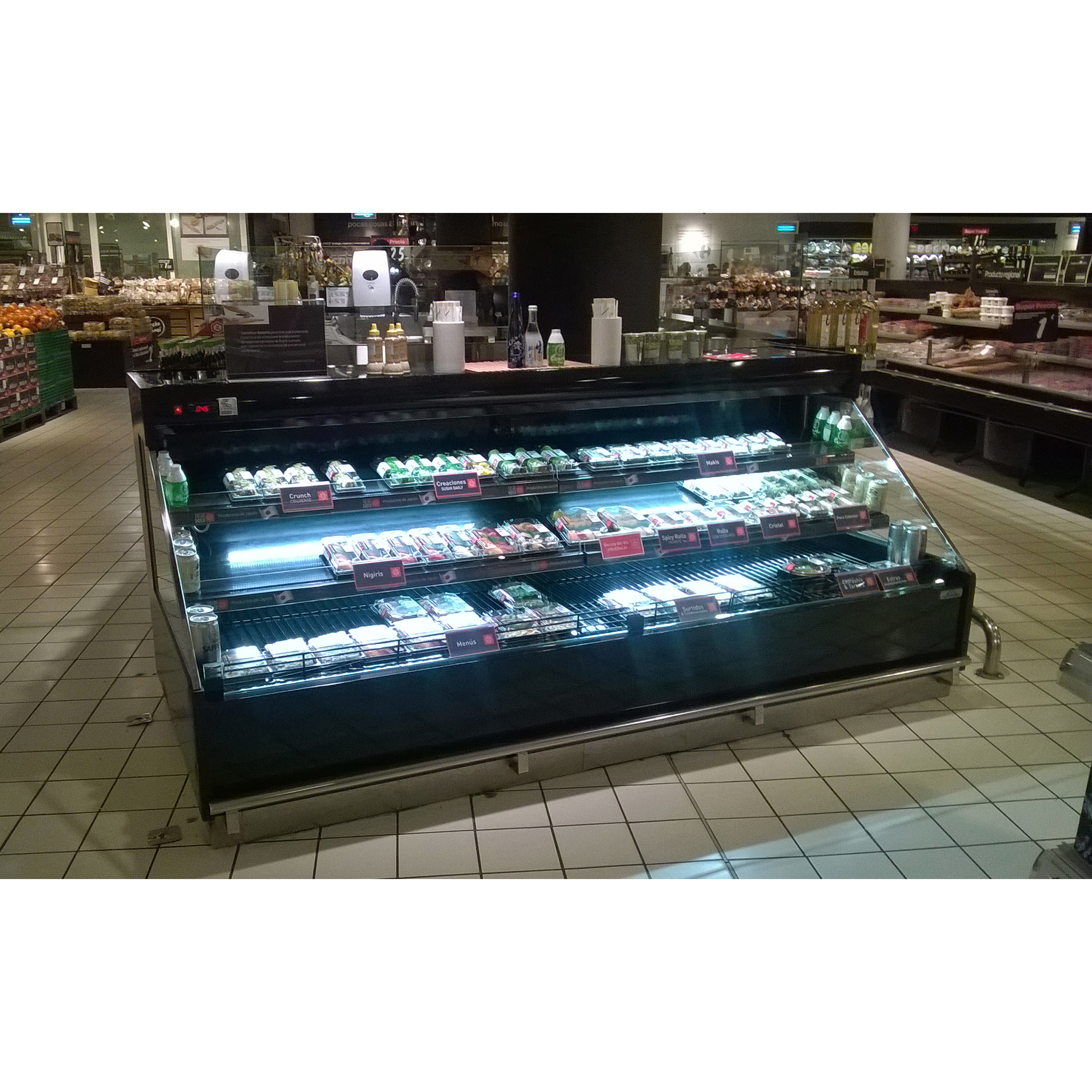Types of Bar Cabinets with Refrigerator Space

Choosing a bar cabinet with integrated refrigeration can significantly enhance your home’s entertainment area. The options available offer a range of styles, sizes, and features to suit various tastes and spaces. Understanding the differences between these types will help you make an informed decision.
Bar Cabinet Styles and Specifications, Bar cabinet with refrigerator space
The following table summarizes the key characteristics of different bar cabinet styles incorporating refrigerator units. Dimensions are approximate and can vary depending on the manufacturer and specific model.
| Style | Dimensions (Approximate) | Materials | Features |
|---|---|---|---|
| Freestanding | 36″-72″ W x 24″-36″ D x 36″-48″ H | Wood (oak, cherry, mahogany), metal, laminate | Built-in refrigerator, shelving, glass doors, wine rack (optional) |
| Built-in | Variable, depending on cabinetry | Wood (matching existing cabinetry), custom materials | Integrated refrigerator, custom shelving, seamless integration with existing kitchen |
| Under-counter | 24″-36″ W x 24″ D x 34″-36″ H | Wood, stainless steel, laminate | Compact refrigerator, limited shelving, often used as a secondary beverage center |
Comparison of Bar Cabinet Types
The choice between freestanding, built-in, and under-counter bar cabinets depends on several factors. Here’s a comparison to aid your decision:
Bar cabinet with refrigerator space – Consider these points when selecting your bar cabinet:
- Freestanding: Offers flexibility in placement and style. Generally more affordable than built-in options. May not seamlessly integrate with existing decor.
- Built-in: Provides a customized, integrated look. Can be more expensive due to custom design and installation. Requires dedicated space within existing cabinetry.
- Under-counter: Space-saving solution, ideal for smaller areas. Limited storage capacity compared to freestanding or built-in options. May require specialized plumbing and electrical connections.
Internal Features of Bar Cabinets with Refrigerators
Internal features significantly impact the functionality and convenience of a bar cabinet. Imagine the sleek, cool interior of a high-end model: adjustable glass shelves gently illuminate bottles of fine wine and spirits, their labels crisply visible under soft LED lighting. A discreet ice maker quietly produces perfectly formed cubes, ready for your next cocktail. Drawers smoothly glide open, revealing neatly organized glassware and bar tools. Some models even incorporate specialized compartments for chilling champagne or storing cigars. The craftsmanship is evident in every detail, from the smooth, polished wood to the precisely engineered mechanisms. These features transform a simple storage unit into a sophisticated and functional heart of the home bar.
Maintenance and Care for Bar Cabinets with Refrigerators: Bar Cabinet With Refrigerator Space

Keeping your bar cabinet refrigerator in top condition involves regular cleaning and proactive maintenance. A well-maintained unit not only ensures the longevity of your appliance but also contributes to the freshness of your beverages and stored items. Neglecting maintenance can lead to performance issues, reduced efficiency, and ultimately, costly repairs. This section provides practical guidance on cleaning, troubleshooting, and overall care for optimal performance.
Cleaning and Maintaining the Refrigerator Section
Regular cleaning is crucial for maintaining hygiene and preventing unpleasant odors. A weekly wipe-down of the interior shelves and compartments with a mild detergent solution and warm water is recommended. Avoid using harsh chemicals or abrasive cleaners, as these can damage the surfaces. For spills, clean them up immediately to prevent staining and bacterial growth. Monthly, consider a more thorough cleaning, including removing all items and washing the shelves and drawers separately. Pay particular attention to the seals around the door, ensuring they remain clean and free from debris to maintain a tight seal. Once a year, consider a deep clean, removing all items, and using a baking soda solution (one tablespoon of baking soda dissolved in one quart of warm water) to remove any stubborn odors or stains.
Troubleshooting Common Issues
Several common issues can arise with bar cabinet refrigerators. Addressing them promptly can prevent more significant problems. Here’s a step-by-step guide to troubleshooting some of the most frequent issues:
- Temperature Fluctuations: Check the door seals for any gaps or damage. Ensure the refrigerator is properly leveled and that the condenser coils (located usually at the back or bottom) are free from dust and debris. If the problem persists, check the thermostat settings and consider contacting a qualified technician.
- Refrigerator Not Cooling: First, ensure the refrigerator is plugged in securely and the power cord is undamaged. Check the circuit breaker or fuse box to make sure the power supply hasn’t been interrupted. Examine the condenser coils for excessive dust buildup and clean them thoroughly. If the problem continues, the compressor or other internal components may require professional attention.
- Excessive Noise: A humming sound is usually normal, but unusually loud noises, rattling, or grinding could indicate a problem with the compressor, fan, or other internal parts. Inspect the unit for anything loose or vibrating. If the noise persists or worsens, professional service is recommended.
- Water Leaks: Check the drain pan (usually located at the bottom of the refrigerator) for clogs or blockages. Ensure the drain line is clear and unobstructed. If the leak continues, inspect the water lines and seals for any damage or leaks. If you suspect a more serious issue, contact a qualified appliance repair professional.
Maintaining Your Bar Cabinet’s Exterior
The exterior of your bar cabinet requires regular attention as well. Dusting the cabinet regularly with a soft cloth will prevent the accumulation of dirt and grime. For stubborn stains or spills, use a damp cloth with a mild cleaner, taking care to avoid scratching the finish. Periodically inspect the cabinet’s hinges and latches to ensure they are functioning correctly and lubricate them as needed with a light oil or silicone spray. Protecting the cabinet’s surface with coasters and placemats can prevent scratches and water rings.
